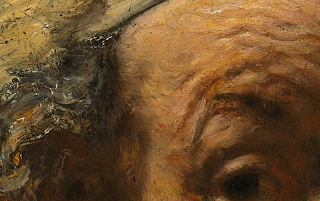Google Arting About: an art historian’s perspective on Google Art Project
 I got talking with some non-art historians one lunchtime this week about Google Art Project and its applications for art historical research. Most of them were quite surprised that I didn’t just think it was a silly toy for amateurs. But really, what’s not to like about making art history feel like play!?
I got talking with some non-art historians one lunchtime this week about Google Art Project and its applications for art historical research. Most of them were quite surprised that I didn’t just think it was a silly toy for amateurs. But really, what’s not to like about making art history feel like play!?
For most people, visiting a museum (especially when overseas) is a tourist experience; for me, it’s usually work, but that doesn’t mean I don’t enjoy it. Research trips are fun but they are still research. So if Google Art is for the most part about giving people the chance to be ‘virtual tourists’, then I don’t see why it doesn’t give me the same chance to be a ‘virtual researcher’.
 Not only is it great to be able to visit museum collections that I’ve never had the opportunity of visiting in the flesh, like the Hermitage, but also the resolution of the images makes it a really useful art viewer. There’s just no way you can get that level of detail (particularly brushwork) in most images on the internet (with a few exceptions like the National Gallery’s zoomy viewer). For me, the detail really is the highlight. Art historians are often interested in less obvious details than those that are usually photographed – Google Art means you can zoom on all kinds of weird things, take a screenshot, and throw it into a Powerpoint presentation for your next class or conference paper.
Not only is it great to be able to visit museum collections that I’ve never had the opportunity of visiting in the flesh, like the Hermitage, but also the resolution of the images makes it a really useful art viewer. There’s just no way you can get that level of detail (particularly brushwork) in most images on the internet (with a few exceptions like the National Gallery’s zoomy viewer). For me, the detail really is the highlight. Art historians are often interested in less obvious details than those that are usually photographed – Google Art means you can zoom on all kinds of weird things, take a screenshot, and throw it into a Powerpoint presentation for your next class or conference paper.
Another thing I was particularly excited about was not just ‘visiting’ galleries I’d never been to, but seeing old favourites in new ways… that is, in ways not possible when you’re standing in the room. I’ve been doing some work on François Lemoyne recently, so when I first had a play with Google Art I went straight to Versailles to hunt out the Apotheosis of Hercules that he painted on the ceiling of the Hercules Salon. I’ve spent many hours standing in that room being jostled by hundreds of tourists, straining my neck and nearly falling over backwards to try and see Lemoyne’s painting. And forget photographing it, that’s always a complete blurry and piecemeal disaster.
 But here it is on Google Art, in amazing high resolution that allows you to zoom in on the details in a way that would never be possible in real life… while also being situated in its original setting, so you don’t forget how it was supposed to be viewed and experienced. This way I’m able to consider not only its reception, but also its production: I get to experience how the courtiers saw it from the ground, but also to see it with the proximity that Lemoyne did from the scaffolding when he was painting it. (As an aside – the only problem with this at the moment is that only half the ceiling has been photographed… I’m hoping this will be amended in the fullness of time).
But here it is on Google Art, in amazing high resolution that allows you to zoom in on the details in a way that would never be possible in real life… while also being situated in its original setting, so you don’t forget how it was supposed to be viewed and experienced. This way I’m able to consider not only its reception, but also its production: I get to experience how the courtiers saw it from the ground, but also to see it with the proximity that Lemoyne did from the scaffolding when he was painting it. (As an aside – the only problem with this at the moment is that only half the ceiling has been photographed… I’m hoping this will be amended in the fullness of time).
With the Versailles example, once again I can see how it’s going to become a really useful teaching and presentation tool. I can take a screen shot of the room and the floor plan, showing exactly where in the palace the painting is so I can show students and others who haven’t had the chance to see it in situ for themselves. How great will that be for teaching museum studies and curating courses, giving students a virtual experience of the space and the context of its location in the museum all at once? Of course, in this respect, one of the pros is also one of the cons… it may be an art historian’s relief to see the Mona Lisa without crowds of tourists, but it’s certainly not an authentic experience of the object from a museological perspective.
Google Art is not flawless and it’s not free of issues… but for the art historian, it’s fun, useful and exciting. And that’s enough for me.


Not only can you take a screenshot… You can also gradually look at details with them on screen! Awesome.